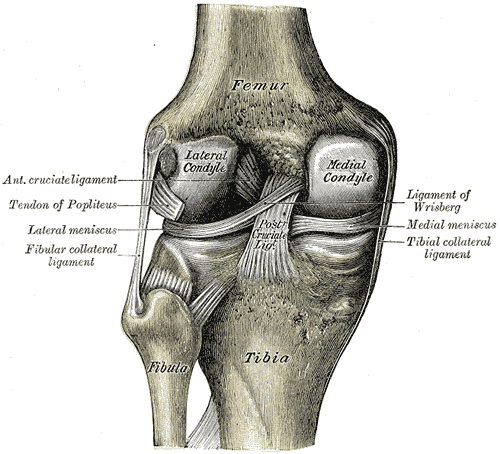YOUR PHYSIO
Condition directory
Cartilage pain with no injury
Menisci are the cartilage disks that are found in our knees. There are two in each knee (one on the inner part of the joint and one on the outer part of the joint) which act as shock absorbers and cushions.
There are two different ways which we can injure our menisci. One is an acute injury where a sudden high load or force causes a tear across the meniscus. This might happen with a sports injury. The other is known as a degenerative meniscus injury which is a more gradual onset and tends to occur as we get older. These are very common and are often found in people with no symptoms. It is believed that they are probably an early sign of osteoarthritis. For some people degenerative meniscal tears it can become painful.
We are looking at a degenerative meniscal injury here but if you feel you have an acute meniscal injury please click here.

Symptoms of degenerative meniscal tear can include:
- Pain, often localized to a specific aspect of the joint. This can feel like a sharp or catching pain which may be made worse with twisting and turning manoeuvres
- Pain on deep squatting
- Joint swelling
- Locking (knee getting stuck in a position) or inability to fully straighten the knee
- Knee giving way associated with pain
These symptoms can start with very little in the way of provocation. They can be due to incidents leading to a twisting of the knee but it is not uncommon to see onset of symptoms when the force involved is not too great..
Self help
Degenerative meniscal tears can be successfully managed with graded exercise and activity modification. There are no quick fixes but evidence that with appropriate management you would expect to see improvements over a 3-6 month period.
In treating a degenerative meniscus it is absolutely key that you pay particular attention to lifestyle factors that affect joint health (visit our guide here). It is also important to manage your activity levels appropriately. Degenerative menisci don’t tend to like a sudden increase in activity so planning is helpful. You should:
- Initially, give your knee an opportunity to settle by modifying or reducing painful activities where possible
- If pain levels are high, pain killers can be used to provide temporary relief – particularly to help you begin some graded exercise. Please discuss with a pharmacist or your GP what the most appropriate medication would be for you.
- Maintain a tolerable level of regular activity to maintain good joint function
- Plan to increase your activity gradually. For example if you are planning a walking holiday, make sure that you have gradually built up to the distances you intend to cover beforehand. If you are currently experiencing a flare of symptoms you should treat your knee using the acute soft tissue advice here . When you have undertaken the acute soft tissue treatment you should try to regain your range of motion, the ability to full straighten and fully bend your knee. You may have to temporarily modify some of your usual activities depending on your pain levels. This does not mean you have to stop all activity. It is useful to find an amount of activity that you can tolerate comfortably and gradually increase this over time. Graded exercise will not damage your knee. Exercises that strengthen your leg muscles would be beneficial - particularly your thigh (quadriceps) and bottom (glutes) muscles.
These exercises may be of help
Further Treatment
Once you have noticed your knee starting to feel somewhat easier with the early management it is a good idea to start to think about returning to your normal activities. If you are struggling to return to your normal activity levels or your knee is not settling, ask your GP for a referral to physiotherapy or fill out our self-referral form here.